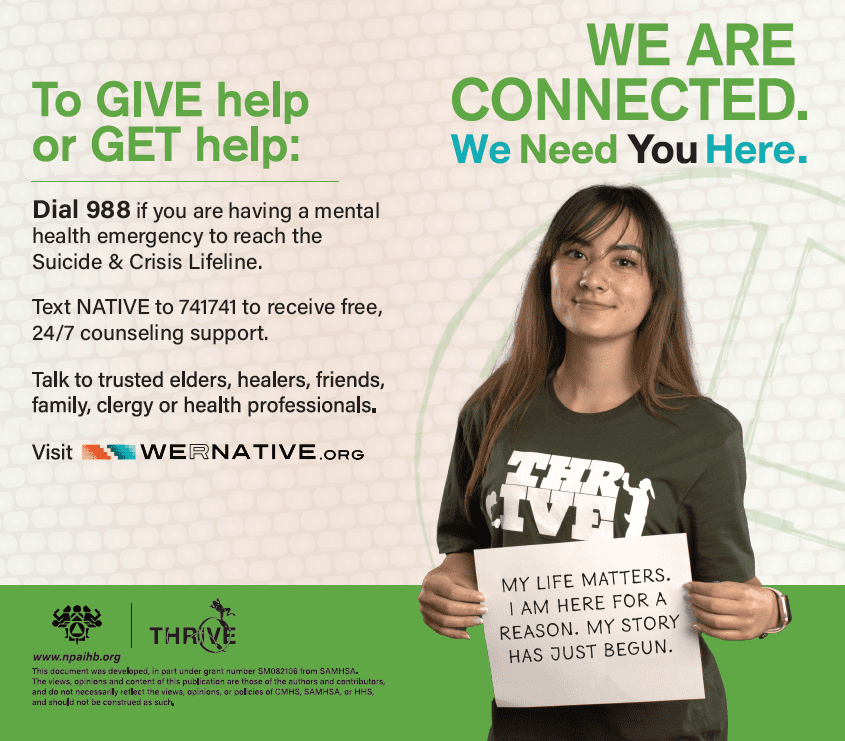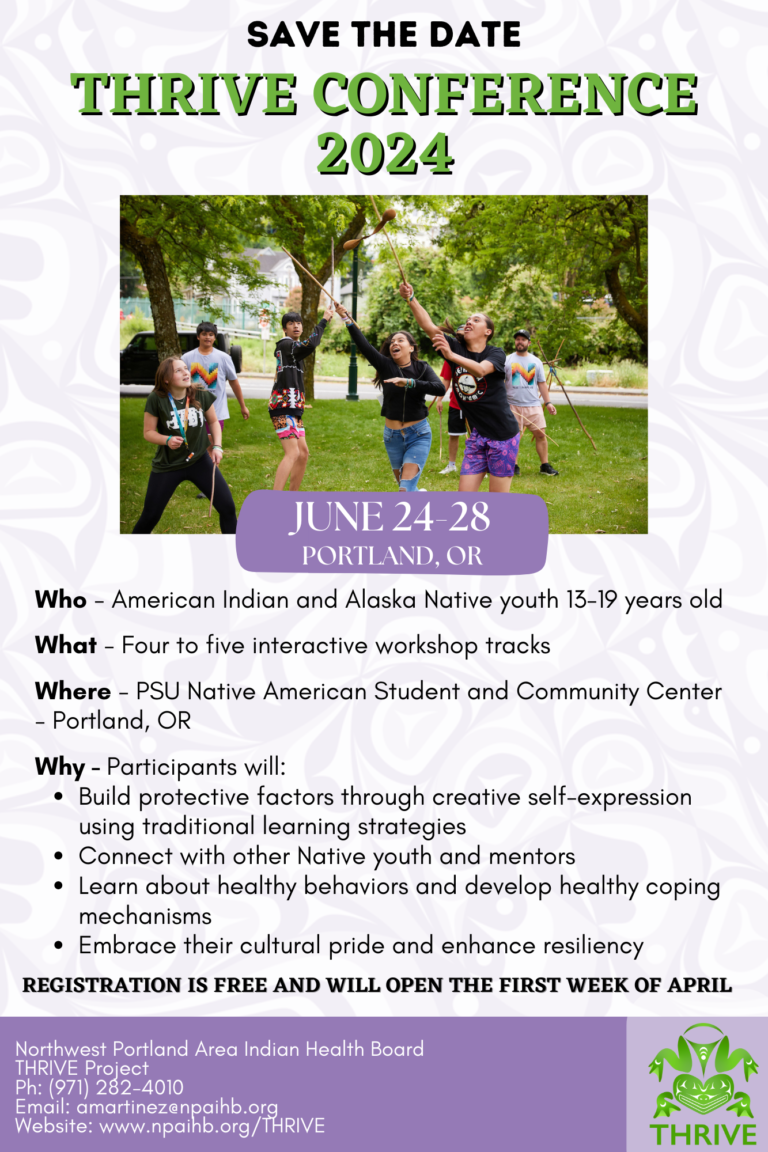
Tribal Health: Reaching out InVolves Everyone (THRIVE) is the suicide prevention project at the NPAIHB. THRIVE works to reduce suicide rates among American Indians and Alaska Natives living in the Pacific Northwest by providing programmatic technical assistance, suicide prevention trainings, and resources to the Northwest Tribes.
- Project Activities
- Tribal Action Plans
- Funding
- Data/Statistics
- Trainings, Courses, & Webinars
- Annual Thrive Conference
- Related Links
- After a Suicide Loss
- Crisis Service Map
Trainings and Presentations
Project staff facilitate trainings and presentations around the topic of suicide. Common presentation topics include Resources for Youth Suicide Prevention, 988 in Indian Country, Caring Text Messages Suicide Prevention Intervention, and Media and Marketing for Veteran’s Suicide Prevention. The THRIVE team are trainers for two of the most widespread suicide intervention gatekeeper trainings: QPR (Question Persuade Refer) and ASIST (Applied Suicide Intervention Skills Training). These trainings are offered at low- or no-cost for NPAIHB member tribes. To request a training or presentation, please contact project director Colbie Caughlan at ccaughlan@npaihb.org.
Preventing Injury through Social Marketing
Several learning and health communication theories support the use of culturally-tailored media to increase behavior change. Tailored information is more likely to be read, understood, perceived as personally relevant, and remembered. Cultural tailoring is particularly important when addressing sensitive health topics like suicide and sexual health. To view the social marketing campaigns, please go to the Social Marketing Campaigns webpage.
Annual THRIVE Conference
This annual summer conference is for Native youth ages 13-19 from all over Indian Country. The conference brings youth together to learn about health promotion and disease prevention with a strong focus on suicide prevention and mental health. To learn more about the THRIVE Conference please view the “THRIVE Conference” tab.
Caring Text Message Intervention Campaigns
Caring Text Messages is an evidence-based behavioral intervention and social marketing campaign, developed by the THRIVE team with the help of Native teens, college students, and Veterans. Native youth from anywhere can text “CARING’’ to 65664 to receive two texts per week with hopeful and encouraging videos, songs, and messages. Caring Messages that “express unconditional care and concern have been shown to prevent suicide deaths, attempts, ideation, and hospitalizations”. Fliers and postcards to promote the campaign are also downloadable from Healthy Native Youth’s website, www.healthynativeyouth.org. For the college caring text messages text “COLLEGE” to 65664 and for the Veterans text messages text “VETERAN” to 65664.
Mind 4 Health
Mind4Health is a text message service for caring adults that builds their capacity to facilitate conversations with youth to nurture mental health. The gatekeeper training was designed by the THRIVE team, to meet a need from adults who work with AI/AN youth, to help community gatekeepers identify youth in need of support and connect them to appropriate services. The series walks participants through three steps to fill their mental health toolbox. The Mind4Health training’s videos and handouts are available on Healthy Native Youth’s website, www.healthnativeyouth.org. Collectively, the evaluations of these programs (i.e., Caring Text Messages, BRAVE, and Mind 4 Health) indicate that behavioral interventions can be feasibly delivered via text message to AI/AN communities and that including Native youth in the formative research is critical to designing comprehensive, culturally-responsive interventions. Access Mind4Health here.
Tribal Boarding School Toolkit for Healing
The purpose of this toolkit is to provide those who work in AI/AN communities with information, resources, and suggested activities for talking about and healing the generational traumatic impacts boarding schools have had on AI/AN individuals, families, and communities. In January 2023, Northwest Portland Area Indian Health Board (NPAIHB) and Indian Health Services (IHS) contracted with Kauffman and Associates, Inc. (KAI) to develop an electronic toolkit for teachers, public health professionals, mental health professionals, tribal administrators, and public safety professionals. The toolkit is intended to be a brief, reader-friendly resource with information on the historical trauma resulting from Indian boarding schools in the United States. This team conducted a literature review, spoke to boarding school survivors and descendants, consulted with individuals and organizations working in the field of American Indian and Alaska Native (AI/AN) healing and resilience, and collaborated with educators to develop this toolkit.
The Zero Suicide Model (ZS)
The THRIVE team hosted a webinar to introduce the Zero Suicide model to new staff at the clinics we are assisting with Zero Suicide implementation. Feel free to check this webinar out and learn about the model!
.
Funded by the Substance Abuse and Mental Health Services Administration (SAMHSA)
Project activities are funded by the SAMHSA Garrett Lee Smith youth suicide prevention grant awarded in June 2019. THRIVE does not currently have funding for Tribal Cooperative Grants but please check back every couple of months to see if there is an update. If you need assistance with honoraria, incentives, training materials, etc. please contact Colbie Caughlan (ccaughlan@npaihb.org or 503-416-3284) to ask if THRIVE can help provide smaller materials for your event(s). Thank you!
Regional Reports
American Indians and Alaska Natives are often incorrectly classified as another race (usually White) in vital statistics, such as suicide rates. THRIVE partners with the IDEA NW project to reduce AI/AN misclassification in suicide and mental health data systems. This data can be found at the links below:
Idaho AI/AN Suicide Data 2013 – 2017
Oregon AI/AN Suicide Data 2013 – 2017
Washington AI/AN Suicide Data 2014 – 2016
Northwest AI/AN Suicide Data 2008 – 2012
Oregon Suicide Emergency Department Visits During Pandemic
Oregon Suicide Emergency Department Visits During Pandemic
Data suggest that suicide is a significant problem throughout Indian Country, particularly among Native youth, males, and veterans. From 2002-2006, the average suicide death rate was highest among AI/AN aged 10-24 years at 27.72 cases per 100,000. In the Northwest (ID, OR, and WA), suicide is the 8th leading cause of death for AI/AN people and the 2nd leading cause of death for AI/ANs ages 15-24 years (this is the same for AI/AN youth throughout the U.S.). For data on Native youth well-being, health priorities, and protective factors, see results from the 2022 THRIVE Tribal Youth Wellbeing Assessment
The Portland Area has one of the higher suicide death rates for AI/AN among the IHS service areas. The IHS reported that, from 1996-1998, the age-adjusted suicide death rate for the Portland Area was 22.0 per 100,000, a rate that was exceeded only by Aberdeen, Alaska, Bemidji, and Tucson.
At the state level, annual suicide rates for AI/AN tend to fluctuate widely because the actual number of deaths each year is relatively small. For example, an average of 20 AI/AN suicides occur in Washington each year, 6 in Oregon, and 4 in Idaho. While males typically die by suicide more often than women, studies suggest that women attempt suicide more frequently than men. This pattern is also present among AI/ANs in the Pacific Northwest.
Data on suicide risk factors and attempts, as opposed to mortality, are available from a variety of sources, including the CDC’s Behavioral Risk Factor Surveillance System (BRFSS) and the Youth Risk Behavior Survey (YRBS). Data from these sources and other studies have found that several factors can put a person at higher risk for attempting suicide, including: – Previous suicide attempt(s) – History of depression – Alcohol or drug abuse – Family history of suicide or violence – Physical illness – Feeling alone. Additional research is needed to identify and explore the culturally unique factors that affect AI/ANs.
There are also protective factors against suicide attempts among AI/ANs. They include:
- Connectedness to family and/or friends
- Connectedness to culture and/or spirituality
- Good emotional and physical health
- Positive communication with family or friends
- Restricted access to lethal means
- Access to mental health care
- Problem-solving skills
- Engagement in positive activities i.e. extracurricular sports, clubs, community center groups, cultural activities, etc.
Request a Suicide Prevention Training!
If you would like to request a suicide prevention training for your Tribe or Tribal staff in WA, OR, or ID, please contact Colbie Caughlan at ccaughlan@npaihb.org. Two different trainings are available as well as suicide prevention presentations or awareness activities:
- QPR (Question, Persuade, Refer) – This is a 1.5 – 2 hour training for anyone who may come in contact with a person thinking about suicide. Participants become suicide prevention gatekeepers and learn what the signs of suicide may be and how to link a person to proper resources or to a person with intervention skills training.
- ASIST (Applied Suicide Intervention Skills Training) – This is a full two day workshop that focuses on teaching participants intervention skills that they may need to be a caregiver of someone thinking about suicide. This is not a counseling treatment model but can be a wonderful supplement to skills that counselors and mental health professionals already possess. It is also a very effective workshop for those who may already understand the signs of suicide but who would like a little bit more training on how to really review a person’s risk of suicide and how to help them get more help.
Suicide Prevention Training and Courses
- Living Works ASIST training
- LivingWorks SafeTALK
- LivingWorks Start
- Question Persuade and Refer (QPR) Online Training
- SPRC free online trainings – can be used for CEUs
- YSPP calendar of free webinars and fee for training – can be used for CEUs
14th Annual THRIVE Youth Conference June 24-25, 2024
- Conference Contact: If you have any questions, contact Colbie Caughlan by email at ccaughlan@npaihb.org.
Check out the evaluation reports from past THRIVE conferences!
- 2011-2019 THRIVE Conference Evaluations Review
- 2019 THRIVE Conference Evaluation Review
- 2021 THRIVE Conference Evaluation Report
Save the Date for the 14th Annual THRIVE Youth Conference!
THRIVE staff would like to say “thank you” to all the partners, facilitators, presenters, volunteers, staff, and chaperones who took the time to invest in these talented youth over the years!
Check out these great memories as youth participants have positively expressed themselves through 4-5 interactive workshops that incorporated AI/AN culture, traditional learning strategies, skill-building activities, and tips on healthy decision-making.
Presented to you by THRIVE, with funding from the Garrett Lee Smith youth suicide prevention grant from SAMHSA and the MSPI grant from the Indian Health Service.
2022 Beats, Lyrics, and Leaders Music Video
2019 Creative Design with OXDX workshop
2017 Gen-I Bootcamp Workshop
Creative Design with Special guest – Native artist Jared Yazzie, OXDX
Youth created four meaningful social marketing campaigns by creating their own logos using digital designs inspired by the environment, culture, body and mind. Native youth amplified the advocacy for Missing and Murdered Indigenous Women, honoring tribal elders and sharing teaching passed down to them, reclaiming tribal identity through their ancestors, and being mindful of the environment and mother earth.
- MMIWG (Murdered Missing Indigenous Women and Girls)
- Life is Sacred
- Defined by my Ancestors, Not Dead Presidents
- Elder Teachings

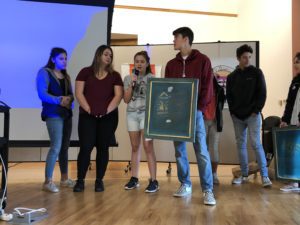

The Beats, Lyrics, Leaders (BLL)
The Beats, Lyrics, Leaders (BLL) music track lead by recording artist J Ross Parrelli and a team of talented mentors guided youth to share their powerful voices and stories. Each participant created their own musical lyrics, created their own beats and rhythms, engaged in public speaking, and collaborate in developing an electrifying music video called “So Native.” This unified video is very powerful in sharing their cultural pride and resiliency.
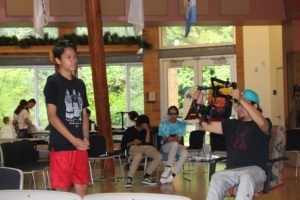
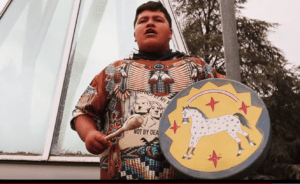
Storytelling in Graphic Novels (culture as prevention)
Youth developed a graphic novel using indigenous storytelling, the Trickster story to discuss and learn the impact of substance abuse disorder and addiction in Native communities. Each story represented oral teachings from their respective communities passed from generation to generation.
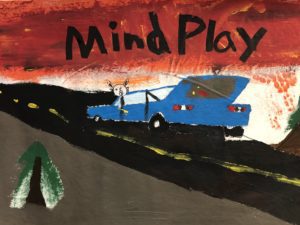
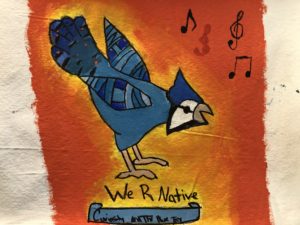

Traditional Foods (culture & nutrition)
Youth prepared a healthy snack using traditional foods, hike through an urban forest making connection with indigenous plants, and participate in a service learning project to remove invasive species and protect biodiversity and water quality.
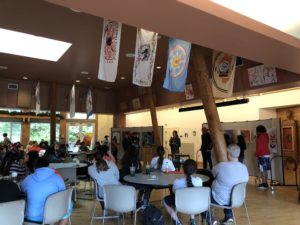
Science and Medical Track (Oregon Health and Science University)
The science and health track with Oregon Health and Science University (OHSU) exposed youth to different health and science fields at OHSU campus. The workshop provides a connection for youth who are interested in health professions and becoming future healers. Youth expressed interest in the respective fields, pharmacy, dentistry, medicine, ophthalmology, pediatrics, nursing, research, chemist, therapist, nutritionist, psychiatry, and public health!
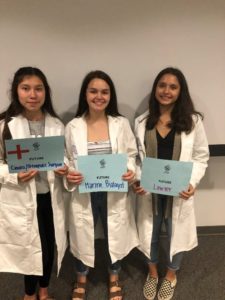
Local Links
NARA
Crisis Contact List
List of Suicide Prevention Trainers in WA, OR, and ID
Native American Youth Family Center (NAYA)
National Indian Child Welfare Association (NICWA)
THRIVE Linktree
Reducing Access to Lethal Means
How to order 988 Materials
State links
Oregon DHS, Public Health Division – Youth Suicide Prevention Program
Oregon Partnership: Crisis Line
Youth Suicide Prevention Program (YSPP) – website for Washington State youth
Washington Native and Strong Lifeline
Washington State: Youth Suicide Prevention
Clark County Teen Talk
Idaho State University- Institute of Rural Health
Idaho Suicide Prevention Coalition
Idaho State: Suicide Prevention
The Teenline offers a crisis line between 4pM and 10PM at 800-852-8336 or Text NATIVE to 839863
Teen Link 866.TEENLINK (833-6546)
National links
National Institute of Mental Health
National Alliance on Mental Illness
IHS Division of Behavioral Health
Centers for Disease Control and Prevention
WeRNative
Suicide Prevention Resource Center (SPRC)
SPRC AI/AN Suicide Prevention
National Suicide Prevention Lifeline
Trevor Helpline for LGBTQ youth
Yellow Ribbon Suicide Prevention Program
Zero Suicide Institute
Reachout.com
Lethal Means & Suicide Prevention: A Guide for Community & Industry Leaders
When someone dies by suicide, many others are deeply affected. It can begin with family and those closest to the person who took their life and then the impact spreads outward to others such as friends, witnesses, first responders, treatment providers, and colleagues. According to the National Alliance on Mental Illness (NAMI), postvention is activities that reduce risk and promote healing after a suicide death. Although postvention is done after a suicide it is important that we prepare for postvention before a suicide.
The list of resources below include information appropriate for particular settings:
- Safe and Effective Messaging for Suicide Prevention –this document can help develop effective messages surrounding a suicide. It includes the do’s and don’ts of reporting for suicides – https://dpi.wi.gov/sites/default/files/imce/sspw/pdf/spsafemessage.pdf
- Safe Reporting on Suicide – what reporters should report after a suicide – – https://sprc.org/wp-content/uploads/2022/11/safereporting_resourcepage.pdf or https://sprc.org/video/safe-reporting-on-suicide/
- Responding to Grief, Trauma, and Distress After a Suicide: U.S. National Guidelines – https://theactionalliance.org/resource/responding-grief-trauma-and-distress-after-suicide-us-national-guidelines
- Suicide Postvention – http://www.csus.edu/indiv/b/brocks/Workshops/NASP/Suicide%20Postvention%20Paper.pdf
- Lifeline Online Postvention Manual– https://sprc.org/online-library/lifeline-online-postvention-manual/
- International Association for Suicide Prevention (IASP) – Suicide Bereavement and Postvention –https://www.iasp.info/suicide-bereavement-and-postvention/
- Hope and Healing: A Practical Guide for Survivors of Suicide – http://www.health.gov.bc.ca/library/publications/year/2007/HopeandHealing.pdf
- The Journey Toward Hope and Healing – https://store.samhsa.gov/product/A-Journey-Toward-Health-and-Hope-Your-Handbook-for-Recovery-After-a-Suicide-Attempt/SMA15-4419
- After An Attempt – TakingCare of Yourself After Your Treatment in the ED – https://store.samhsa.gov/product/A-Guide-for-Taking-Care-of-Yourself-After-Your-Treatment-in-the-Emergency-Department/SMA18-4355ENG
- Guidelines to Assist in Responding to Attempted Suicide or Suicide by a Student – https://www.education.vic.gov.au/Documents/school/principals/health/suicideguidelines.pdf
- American Foundation for Suicide Prevention (AFSP) – Children, Teens, and Suicide Loss Booklet – https://afsp.org/find-support/ive-lost-someone/resources-loss-survivors/children-teens-suicide-loss/ (for an online copy) or https://store.afsp.org/afsp/product/01197F58-54A5-4FB4-B416-CBE2E7E0D524 (to purchase a paper copy)
- A Manager’s Guide to Suicide Postvention in the Workplace – https://theactionalliance.org/resource/managers-guide-suicide-postvention-workplace-10-action-steps-dealing-aftermath-suicide
- StrongHearts Native Helpline – domestic violence and dating violence helpline for AI/AN people offering culturally appropriate support from 7am-10pm CT – http://strongheartshelpline.org/
The following postvention resources all discuss demoralization:
- The Suicide Prevention Resource Center’s “After a Suicide: A Toolkit for Schools (Second Edition)” is quite comprehensive and includes immediate post-suicide action steps for schools in the “Crisis Response” section (pages 8-12) that might be informative. The toolkit also includes information on memorials and long-term postvention strategies. See pages 16, 25-30, and page 31 for a specific decision-making tool schools can use to direct next steps.
- SAMHSA’s “Preventing Suicide: A Toolkit For High Schools” includes information on memorials and long-term strategies, in addition to specific tools and checklists schools can use to inform next steps (pages 105 and 109 might be most relevant).
- Although this resource was developed for college campuses, the Higher Education Mental Health Alliance’s “Postvention: A Guide For Response To Suicide On College Campuses” also provides some helpful information about postvention that k-12 schools could also consider, including information on memorials/anniversaries (page 23-25).
- The National Association of School Psychologists (NASP) offers several pieces of guidance related to “Memorials” (this is a PDF link, which includes a list of DOs and DONTs) “Addressing Grief,” and “Anniversaries of Traumatic Events: Guidance for Educators.” Please note that some of these NASP resources are not specific to suicide deaths, but taken on the whole, they all provide some pretty detailed guidance for schools.
- The University of Southern California’s National Center for School Crisis and Bereavement offers “Guidelines For Schools Responding To A Death By Suicide.” That guidance directly addresses some staff notification considerations, memorials, and handling of student belongings. You might also pass along the “Guidelines For Responding To The Death Of A Student Or School Staff” (these two resources are very similar to one another, but they do offer some interesting different bits of information).
- The 988 Suicide & Crisis Lifeline Help Yourself page – Resources for survivors of suicide loss to take care of themselves
Crisis intervention services respond to those experiencing distress or anxiety that results from mental health and substance use disorder. One of the main goals of crisis intervention services is to prevent people, including those from indigenous communities, from needing more restrictive care, such as psychiatric hospitalization or emergency detention. These services are important and available for American Indian and Alaska Native (AI/AN) people.
Trainings and Presentations
Project staff facilitate trainings and presentations around the topic of suicide. Common presentation topics include Resources for Youth Suicide Prevention, 988 in Indian Country, Caring Text Messages Suicide Prevention Intervention, and Media and Marketing for Veteran’s Suicide Prevention. The THRIVE team are trainers for two of the most widespread suicide intervention gatekeeper trainings: QPR (Question Persuade Refer) and ASIST (Applied Suicide Intervention Skills Training). These trainings are offered at low- or no-cost for NPAIHB member tribes. To request a training or presentation, please contact project director Colbie Caughlan at ccaughlan@npaihb.org.
Preventing Injury through Social Marketing
Several learning and health communication theories support the use of culturally-tailored media to increase behavior change. Tailored information is more likely to be read, understood, perceived as personally relevant, and remembered. Cultural tailoring is particularly important when addressing sensitive health topics like suicide and sexual health. To view the social marketing campaigns, please go to the Social Marketing Campaigns webpage.
Annual THRIVE Conference
This annual summer conference is for Native youth ages 13-19 from all over Indian Country. The conference brings youth together to learn about health promotion and disease prevention with a strong focus on suicide prevention and mental health. To learn more about the 2023 THRIVE Conference please scroll down and view the “THRIVE Conference” tab.
Caring Text Message Intervention Campaigns
Caring Text Messages is an evidence-based behavioral intervention and social marketing campaign, developed by the THRIVE team with the help of Native teens, college students, and Veterans. Native youth from anywhere can text “CARING’’ to 65664 to receive two texts per week with hopeful and encouraging videos, songs, and messages. Caring Messages that “express unconditional care and concern have been shown to prevent suicide deaths, attempts, ideation, and hospitalizations”. Fliers and postcards to promote the campaign are also downloadable from Healthy Native Youth’s website, www.healthynativeyouth.org. For the college caring text messages text “COLLEGE” to 65664 and for the Veterans text messages text “VETERAN” to 65664.
Mind 4 Health
Mind4Health is a text message service for caring adults that builds their capacity to facilitate conversations with youth to nurture mental health. The gatekeeper training was designed by the THRIVE team, to meet a need from adults who work with AI/AN youth, to help community gatekeepers identify youth in need of support and connect them to appropriate services. The series walks participants through three steps to fill their mental health toolbox. The Mind4Health training’s videos and handouts are available on Healthy Native Youth’s website, www.healthnativeyouth.org. Collectively, the evaluations of these programs (i.e., Caring Text Messages, BRAVE, and Mind 4 Health) indicate that behavioral interventions can be feasibly delivered via text message to AI/AN communities and that including Native youth in the formative research is critical to designing comprehensive, culturally-responsive interventions.
The Zero Suicide Model (ZS)
“The Zero Suicide Model relies on a system-wide approach to improve outcomes and close gaps. Success is achieved when clinical teams embrace the understanding that suicide deaths are preventable in their organization; and when patients feel comfortable disclosing suicide risk and work with clinic staff to lower that risk. The Model is based on the realization that suicidal individuals often fall through multiple cracks in a fragmented and sometimes distracted health care system, and on the premise that a systematic approach to quality improvement is necessary” (sprc.org). THRIVE currently has three tribal clinics implementing the ZS model.
Funded by the Substance Abuse and Mental Health Services Administration (SAMHSA)
Project activities are funded by the SAMHSA Garrett Lee Smith youth suicide prevention grant awarded in June 2019. THRIVE does not currently have funding for Tribal Cooperative Grants but please check back every couple of months to see if there is an update. If you need assistance with honoraria, incentives, training materials, etc. please contact Colbie Caughlan (ccaughlan@npaihb.org or 503-416-3284) to ask if THRIVE can help provide smaller materials for your event(s). Thank you!
Regional Reports
American Indians and Alaska Natives are often incorrectly classified as another race (usually White) in vital statistics, such as suicide rates. THRIVE partners with the IDEA NW project to reduce AI/AN misclassification in suicide and mental health data systems. This data can be found at the links below:
Idaho AI/AN Suicide Data 2013 – 2017
Oregon AI/AN Suicide Data 2013 – 2017
Washington AI/AN Suicide Data 2014 – 2016
Northwest AI/AN Suicide Data 2008 – 2012
Oregon Suicide Emergency Department Visits During Pandemic
Oregon Suicide Emergency Department Visits During Pandemic
Data suggest that suicide is a significant problem throughout Indian Country, particularly among Native youth, males, and veterans. From 2002-2006, the average suicide death rate was highest among AI/AN aged 10-24 years at 27.72 cases per 100,000. In the Northwest (ID, OR, and WA), suicide is the 8th leading cause of death for AI/AN people and the 2nd leading cause of death for AI/ANs ages 15-24 years (this is the same for AI/AN youth throughout the U.S.). For data on Native youth well-being, health priorities, and protective factors, see results from the 2022 THRIVE Tribal Youth Wellbeing Assessment
The Portland Area has one of the higher suicide death rates for AI/AN among the IHS service areas. The IHS reported that, from 1996-1998, the age-adjusted suicide death rate for the Portland Area was 22.0 per 100,000, a rate that was exceeded only by Aberdeen, Alaska, Bemidji, and Tucson.
At the state level, annual suicide rates for AI/AN tend to fluctuate widely because the actual number of deaths each year is relatively small. For example, an average of 20 AI/AN suicides occur in Washington each year, 6 in Oregon, and 4 in Idaho. While males typically die by suicide more often than women, studies suggest that women attempt suicide more frequently than men. This pattern is also present among AI/ANs in the Pacific Northwest.
Data on suicide risk factors and attempts, as opposed to mortality, are available from a variety of sources, including the CDC’s Behavioral Risk Factor Surveillance System (BRFSS) and the Youth Risk Behavior Survey (YRBS). Data from these sources and other studies have found that several factors can put a person at higher risk for attempting suicide, including: – Previous suicide attempt(s) – History of depression – Alcohol or drug abuse – Family history of suicide or violence – Physical illness – Feeling alone. Additional research is needed to identify and explore the culturally unique factors that affect AI/ANs.
There are also protective factors against suicide attempts among AI/ANs. They include:
- Connectedness to family and/or friends
- Connectedness to culture and/or spirituality
- Good emotional and physical health
- Positive communication with family or friends
- Restricted access to lethal means
- Access to mental health care
- Problem-solving skills
- Engagement in positive activities i.e. extracurricular sports, clubs, community center groups, cultural activities, etc.
Request a Suicide Prevention Training!
If you would like to request a suicide prevention training for your Tribe or Tribal staff in WA, OR, or ID, please contact Colbie Caughlan at ccaughlan@npaihb.org. Two different trainings are available as well as suicide prevention presentations or awareness activities:
- QPR (Question, Persuade, Refer) – This is a 1.5 – 2 hour training for anyone who may come in contact with a person thinking about suicide. Participants become suicide prevention gatekeepers and learn what the signs of suicide may be and how to link a person to proper resources or to a person with intervention skills training.
- ASIST (Applied Suicide Intervention Skills Training) – This is a full two day workshop that focuses on teaching participants intervention skills that they may need to be a caregiver of someone thinking about suicide. This is not a counseling treatment model but can be a wonderful supplement to skills that counselors and mental health professionals already possess. It is also a very effective workshop for those who may already understand the signs of suicide but who would like a little bit more training on how to really review a person’s risk of suicide and how to help them get more help.
Suicide Prevention Training and Courses
- Living Works ASIST training
- LivingWorks SafeTALK
- LivingWorks Start
- Question Persuade and Refer (QPR) Online Training
- SPRC free online trainings – can be used for CEUs
- YSPP calendar of free webinars and fee for training – can be used for CEUs
14th Annual THRIVE Youth Conference June 24-25, 2024
- Conference Contact: If you have any questions, contact Colbie Caughlan by email at ccaughlan@npaihb.org.
Check out the evaluation reports from past THRIVE conferences!
- 2011-2019 THRIVE Conference Evaluations Review
- 2019 THRIVE Conference Evaluation Review
- 2021 THRIVE Conference Evaluation Report
Save the Date for the 14th Annual THRIVE Youth Conference!
THRIVE staff would like to say “thank you” to all the partners, facilitators, presenters, volunteers, staff, and chaperones who took the time to invest in these talented youth over the years!
Check out these great memories as youth participants have positively expressed themselves through 4-5 interactive workshops that incorporated AI/AN culture, traditional learning strategies, skill-building activities, and tips on healthy decision-making.
Presented to you by THRIVE, with funding from the Garrett Lee Smith youth suicide prevention grant from SAMHSA and the MSPI grant from the Indian Health Service.
2022 Beats, Lyrics, and Leaders Music Video
2019 Creative Design with OXDX workshop
2017 Gen-I Bootcamp Workshop
Creative Design with Special guest – Native artist Jared Yazzie, OXDX
Youth created four meaningful social marketing campaigns by creating their own logos using digital designs inspired by the environment, culture, body and mind. Native youth amplified the advocacy for Missing and Murdered Indigenous Women, honoring tribal elders and sharing teaching passed down to them, reclaiming tribal identity through their ancestors, and being mindful of the environment and mother earth.
- MMIWG (Murdered Missing Indigenous Women and Girls)
- Life is Sacred
- Defined by my Ancestors, Not Dead Presidents
- Elder Teachings



The Beats, Lyrics, Leaders (BLL)
The Beats, Lyrics, Leaders (BLL) music track lead by recording artist J Ross Parrelli and a team of talented mentors guided youth to share their powerful voices and stories. Each participant created their own musical lyrics, created their own beats and rhythms, engaged in public speaking, and collaborate in developing an electrifying music video called “So Native.” This unified video is very powerful in sharing their cultural pride and resiliency.


Storytelling in Graphic Novels (culture as prevention)
Youth developed a graphic novel using indigenous storytelling, the Trickster story to discuss and learn the impact of substance abuse disorder and addiction in Native communities. Each story represented oral teachings from their respective communities passed from generation to generation.



Traditional Foods (culture & nutrition)
Youth prepared a healthy snack using traditional foods, hike through an urban forest making connection with indigenous plants, and participate in a service learning project to remove invasive species and protect biodiversity and water quality.

Science and Medical Track (Oregon Health and Science University)
The science and health track with Oregon Health and Science University (OHSU) exposed youth to different health and science fields at OHSU campus. The workshop provides a connection for youth who are interested in health professions and becoming future healers. Youth expressed interest in the respective fields, pharmacy, dentistry, medicine, ophthalmology, pediatrics, nursing, research, chemist, therapist, nutritionist, psychiatry, and public health!

Local Links
NARA
Crisis Contact List
List of Suicide Prevention Trainers in WA, OR, and ID
Native American Youth Family Center (NAYA)
National Indian Child Welfare Association (NICWA)
THRIVE Linktree
Reducing Access to Lethal Means
How to order 988 Materials
State links
Oregon DHS, Public Health Division – Youth Suicide Prevention Program
Oregon Partnership: Crisis Line
Youth Suicide Prevention Program (YSPP) – website for Washington State youth
Washington Native and Strong Lifeline
Washington State: Youth Suicide Prevention
Clark County Teen Talk
Idaho State University- Institute of Rural Health
Idaho Suicide Prevention Coalition
Idaho State: Suicide Prevention
The Teenline offers a crisis line between 4pM and 10PM at 800-852-8336 or Text NATIVE to 839863
Teen Link 866.TEENLINK (833-6546)
National links
National Institute of Mental Health
National Alliance on Mental Illness
IHS Division of Behavioral Health
Centers for Disease Control and Prevention
WeRNative
Suicide Prevention Resource Center (SPRC)
SPRC AI/AN Suicide Prevention
National Suicide Prevention Lifeline
Trevor Helpline for LGBTQ youth
Yellow Ribbon Suicide Prevention Program
Zero Suicide Institute
Reachout.com
Lethal Means & Suicide Prevention: A Guide for Community & Industry Leaders
When someone dies by suicide, many others are deeply affected. It can begin with family and those closest to the person who took their life and then the impact spreads outward to others such as friends, witnesses, first responders, treatment providers, and colleagues. According to the National Alliance on Mental Illness (NAMI), postvention is activities that reduce risk and promote healing after a suicide death. Although postvention is done after a suicide it is important that we prepare for postvention before a suicide.
The list of resources below include information appropriate for particular settings:
- Safe and Effective Messaging for Suicide Prevention –this document can help develop effective messages surrounding a suicide. It includes the do’s and don’ts of reporting for suicides – https://dpi.wi.gov/sites/default/files/imce/sspw/pdf/spsafemessage.pdf
- Safe Reporting on Suicide – what reporters should report after a suicide – – https://sprc.org/wp-content/uploads/2022/11/safereporting_resourcepage.pdf or https://sprc.org/video/safe-reporting-on-suicide/
- Responding to Grief, Trauma, and Distress After a Suicide: U.S. National Guidelines – https://theactionalliance.org/resource/responding-grief-trauma-and-distress-after-suicide-us-national-guidelines
- Suicide Postvention – http://www.csus.edu/indiv/b/brocks/Workshops/NASP/Suicide%20Postvention%20Paper.pdf
- Lifeline Online Postvention Manual– https://sprc.org/online-library/lifeline-online-postvention-manual/
- International Association for Suicide Prevention (IASP) – Suicide Bereavement and Postvention –https://www.iasp.info/suicide-bereavement-and-postvention/
- Hope and Healing: A Practical Guide for Survivors of Suicide – http://www.health.gov.bc.ca/library/publications/year/2007/HopeandHealing.pdf
- The Journey Toward Hope and Healing – https://store.samhsa.gov/product/A-Journey-Toward-Health-and-Hope-Your-Handbook-for-Recovery-After-a-Suicide-Attempt/SMA15-4419
- After An Attempt – TakingCare of Yourself After Your Treatment in the ED – https://store.samhsa.gov/product/A-Guide-for-Taking-Care-of-Yourself-After-Your-Treatment-in-the-Emergency-Department/SMA18-4355ENG
- Guidelines to Assist in Responding to Attempted Suicide or Suicide by a Student – https://www.education.vic.gov.au/Documents/school/principals/health/suicideguidelines.pdf
- American Foundation for Suicide Prevention (AFSP) – Children, Teens, and Suicide Loss Booklet – https://afsp.org/find-support/ive-lost-someone/resources-loss-survivors/children-teens-suicide-loss/ (for an online copy) or https://store.afsp.org/afsp/product/01197F58-54A5-4FB4-B416-CBE2E7E0D524 (to purchase a paper copy)
- A Manager’s Guide to Suicide Postvention in the Workplace – https://theactionalliance.org/resource/managers-guide-suicide-postvention-workplace-10-action-steps-dealing-aftermath-suicide
- StrongHearts Native Helpline – domestic violence and dating violence helpline for AI/AN people offering culturally appropriate support from 7am-10pm CT – http://strongheartshelpline.org/
The following postvention resources all discuss demoralization:
- The Suicide Prevention Resource Center’s “After a Suicide: A Toolkit for Schools (Second Edition)” is quite comprehensive and includes immediate post-suicide action steps for schools in the “Crisis Response” section (pages 8-12) that might be informative. The toolkit also includes information on memorials and long-term postvention strategies. See pages 16, 25-30, and page 31 for a specific decision-making tool schools can use to direct next steps.
- SAMHSA’s “Preventing Suicide: A Toolkit For High Schools” includes information on memorials and long-term strategies, in addition to specific tools and checklists schools can use to inform next steps (pages 105 and 109 might be most relevant).
- Although this resource was developed for college campuses, the Higher Education Mental Health Alliance’s “Postvention: A Guide For Response To Suicide On College Campuses” also provides some helpful information about postvention that k-12 schools could also consider, including information on memorials/anniversaries (page 23-25).
- The National Association of School Psychologists (NASP) offers several pieces of guidance related to “Memorials” (this is a PDF link, which includes a list of DOs and DONTs) “Addressing Grief,” and “Anniversaries of Traumatic Events: Guidance for Educators.” Please note that some of these NASP resources are not specific to suicide deaths, but taken on the whole, they all provide some pretty detailed guidance for schools.
- The University of Southern California’s National Center for School Crisis and Bereavement offers “Guidelines For Schools Responding To A Death By Suicide.” That guidance directly addresses some staff notification considerations, memorials, and handling of student belongings. You might also pass along the “Guidelines For Responding To The Death Of A Student Or School Staff” (these two resources are very similar to one another, but they do offer some interesting different bits of information).
- The 988 Suicide & Crisis Lifeline Help Yourself page – Resources for survivors of suicide loss to take care of themselves
Crisis intervention services respond to those experiencing distress or anxiety that results from mental health and substance use disorder. One of the main goals of crisis intervention services is to prevent people, including those from indigenous communities, from needing more restrictive care, such as psychiatric hospitalization or emergency detention. These services are important and available for American Indian and Alaska Native (AI/AN) people.
Goals
- Increase knowledge and awareness about suicide among tribal community members, and in doing so, take steps to address the silence and fear that exists in many of our communities preventing use of available prevention and treatment services.
- Improve intertribal and interagency communication about suicide prevention and treatment in order to share and maximize limited resources, by working collaboratively with the Northwest Native Adolescent Health Alliance and other regional partners.
- Increase the capacity of tribal health programs to track, prevent, and treat suicide.
For Email Marketing you can trust.
